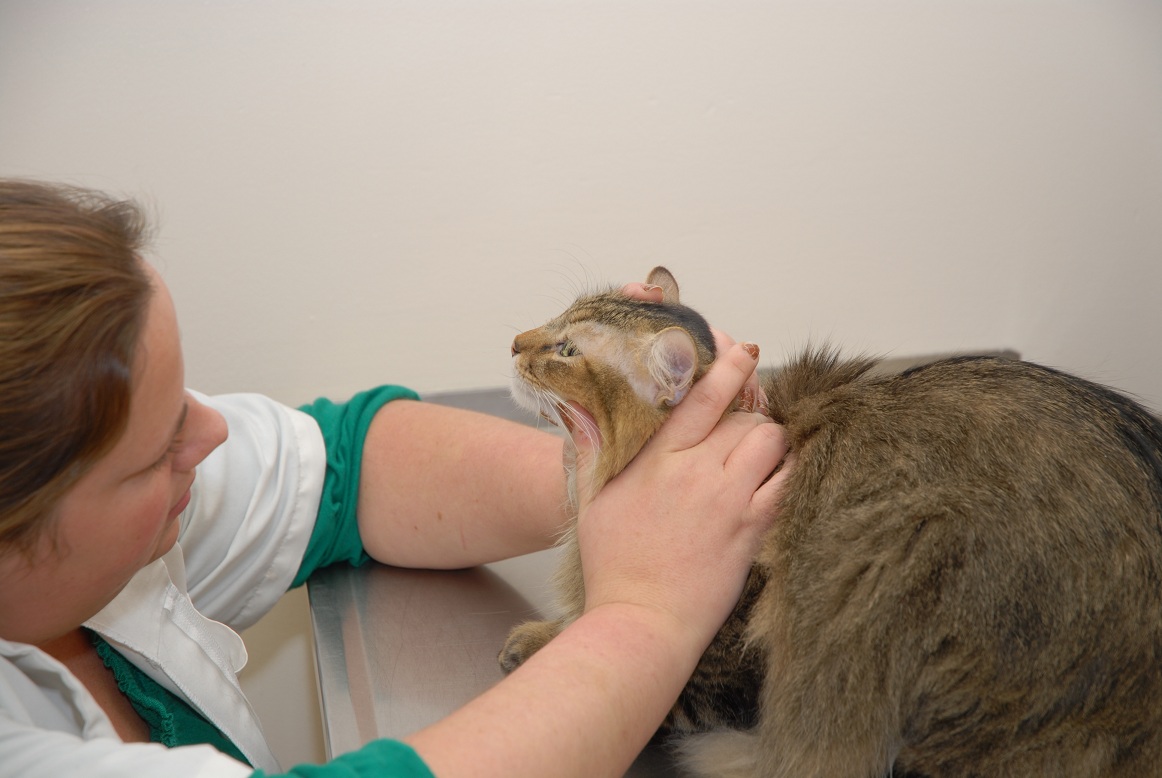The rising cost of vet care is putting pets in danger. Most cat parents know that taking our furry feline friends to the vet for regular checkups is necessary for their health, and we all know the necessity of taking them to the vet if they’re sick or injured. What do you do, though, if you can’t afford it? Oftentimes, pets go without when people can’t afford vet care, as do people who can’t afford health insurance.
How expensive is major vet care, like hospitalization?
The Washington Post published an article about Orangey, a ginger tom that had the misfortune of getting caught under Peter Fenton’s garage door. He knew that Orangey was injured so he rushed him to the nearest emergency vet. Orangey’s injuries were minor, thankfully, but the vet kept him for 48 hours. Orangey’s vet care ultimately cost $968.29.
In 2011, our cat Chase swallowed a piece of fabric that caused a blockage in his digestive tract. In his first round of vet care, he managed to pass it, but doing so caused a serious infection, and he had to go back to the vet to undergo emergency surgery and hospitalization. All told, we spent more than $2,000 for him. That might seem cheap for emergency surgery and several days of hospitalization, but it was a shock to us.
That was also several years ago. We don’t know how much the same treatment would cost today given the rising cost of vet care.
These growing costs mean low-income families can’t afford it
The cost of vet care can be much worse, too, depending on where you live along with other factors. According to the Humane Society, 23 million pets live with people who are at or below the federal poverty level. Those are people who can’t afford vet care. They can barely afford pet food.
Many non-profits have started up low-cost spay and neuter clinics (including the Humane Society), but these still aren’t available in many areas. They also don’t generally provide other types of vet care.
Worse, some private veterinarians have started fighting against that. Fenton’s piece in the Washington Post notes that those groups claim these non-profit, low-cost clinics threaten their profession.
Veterinarian incomes, crippling student debt, and other costs are a problem, too
Vet incomes are another problem, but vets need to pay for their crippling student debt, along with all the associated costs of running a clinic. The annual personal income for a veterinarian is $120,000 per year, according to Fenton, which is up from $60,000 way back in 1995. So their incomes have risen by 100 percent in 20 years, while inflation and other costs have not risen nearly that high.
However, student loans have risen by far more than inflation, too. With clients finding cheaper alternatives to medication online or in their regular pharmacies, as opposed to the vet’s office, that makes other charges for vet care go up.
This is not to say that veterinarians are totally, completely, 100 percent innocent. Some do milk their clients. Robert Foley, of The Angry Vet blog, talks about how some vets will run up bills with unnecessary tests and hospitalizations. He acknowledges that not every vet who charges high prices can justify it.
Are there alternatives to paying for vet care entirely out-of-pocket?
Foley also rails against pet parents who don’t do anything to lower their own vet care costs, such as buying pet insurance or applying for Care Credit. Care Credit sounds great. However, as Care Credit client, I personally can attest to the fact that their APRs are awfully high. Ours is 26.99 percent; we’ve got credit cards through our bank that are at 18 percent.
Not everybody can afford to go into debt like that for even one major vet expense. We are lucky here that we can afford the payments with the high APR. But we also have to acknowledge that not everybody can afford that.
Pet insurance isn’t all its cracked up to be, either. Some plans cover up to 90 percent of vet costs, but you still have to pay for your own vet care up front and then submit a claim. So you either need to have the money in your bank account already, or you need to have a credit card that will cover things while you wait for your claim to be processed.
However, insurance can be a viable method of helping you pay the cost of vet care. For more on the pros and cons of pet insurance, click here.
Lowering the cost of vet care on your own
There are ways of lowering your vet costs without doing either of those things. The first will probably seem obvious to you: Preventative care. It’s still expensive, but not nearly as expensive as illnesses and emergencies are.
You can also shop around for the best vets that may fit your budget and discuss your financial situation with your vet on your first visit. Some vets will work with you to help you afford vet care for your pet.
If you live near a college or university with a veterinary school, you can contact them to see if they’d be willing to see your pet. They’re always looking for animals on which to practice various types of care. You might find this method to be a good fit for you.
The cost of vet care boils down to one thing
The growing cost of vet care comes down to the fact that too much is too expensive for clients and for vets. It’s a much more complex problem than the veterinary profession just getting greedy and charging way too much. Nobody can dispute that we need to find ways to solve these problems, though, because Fenton is right: It does put pets in danger.





